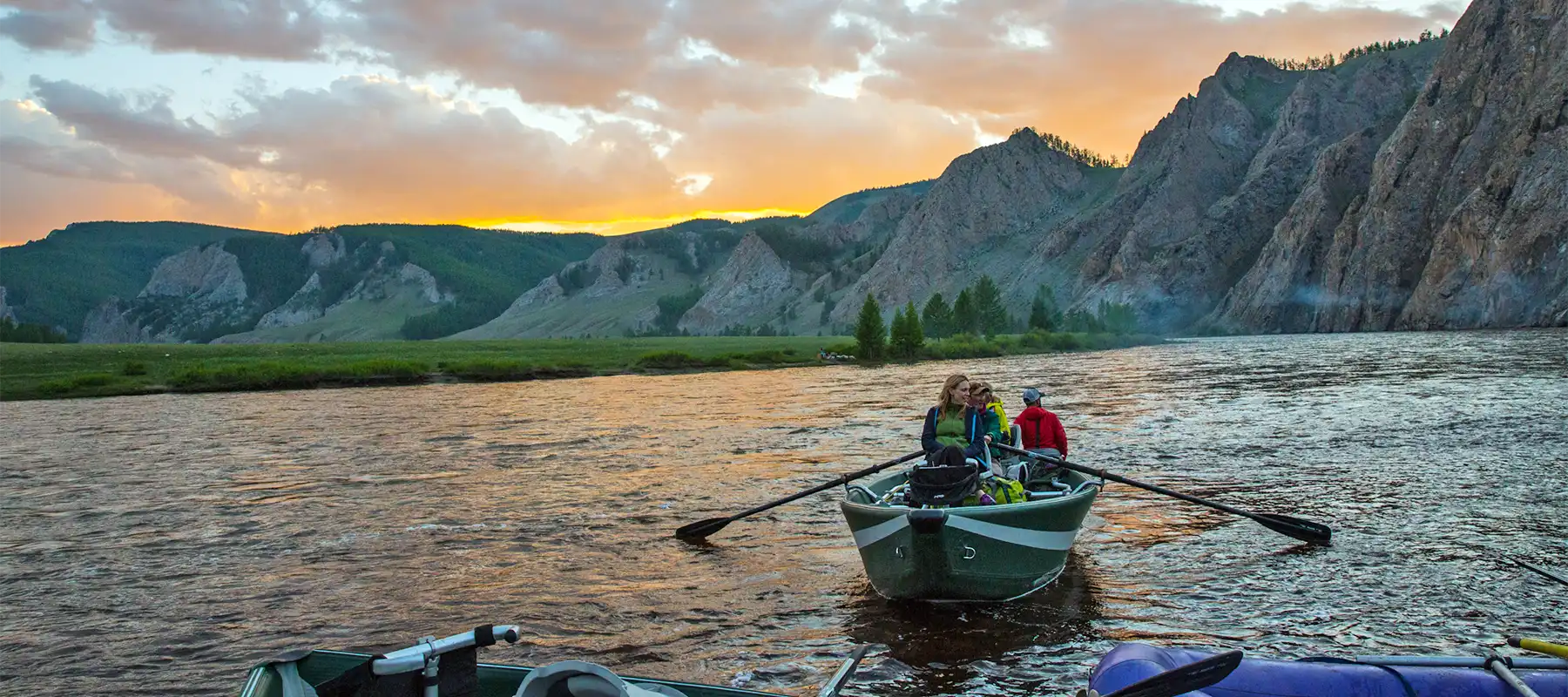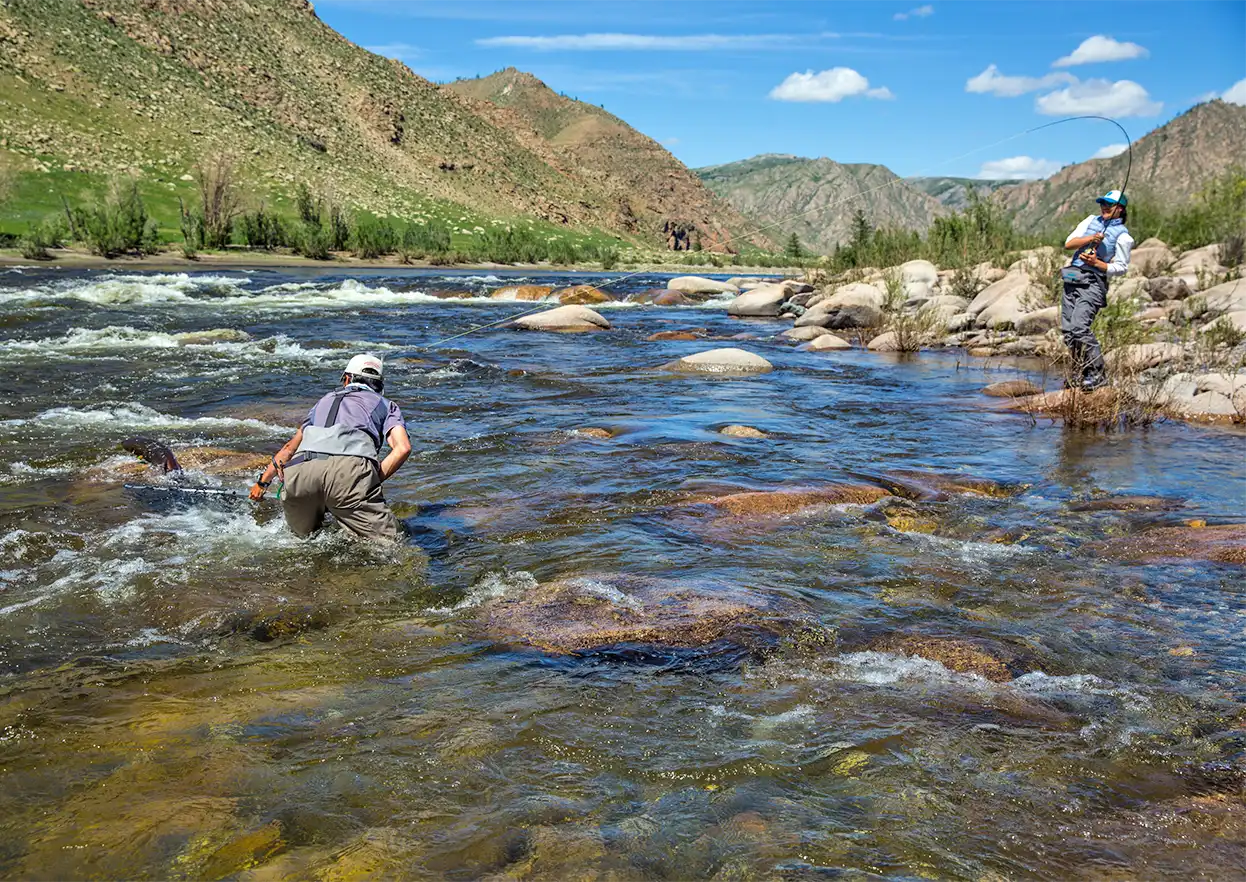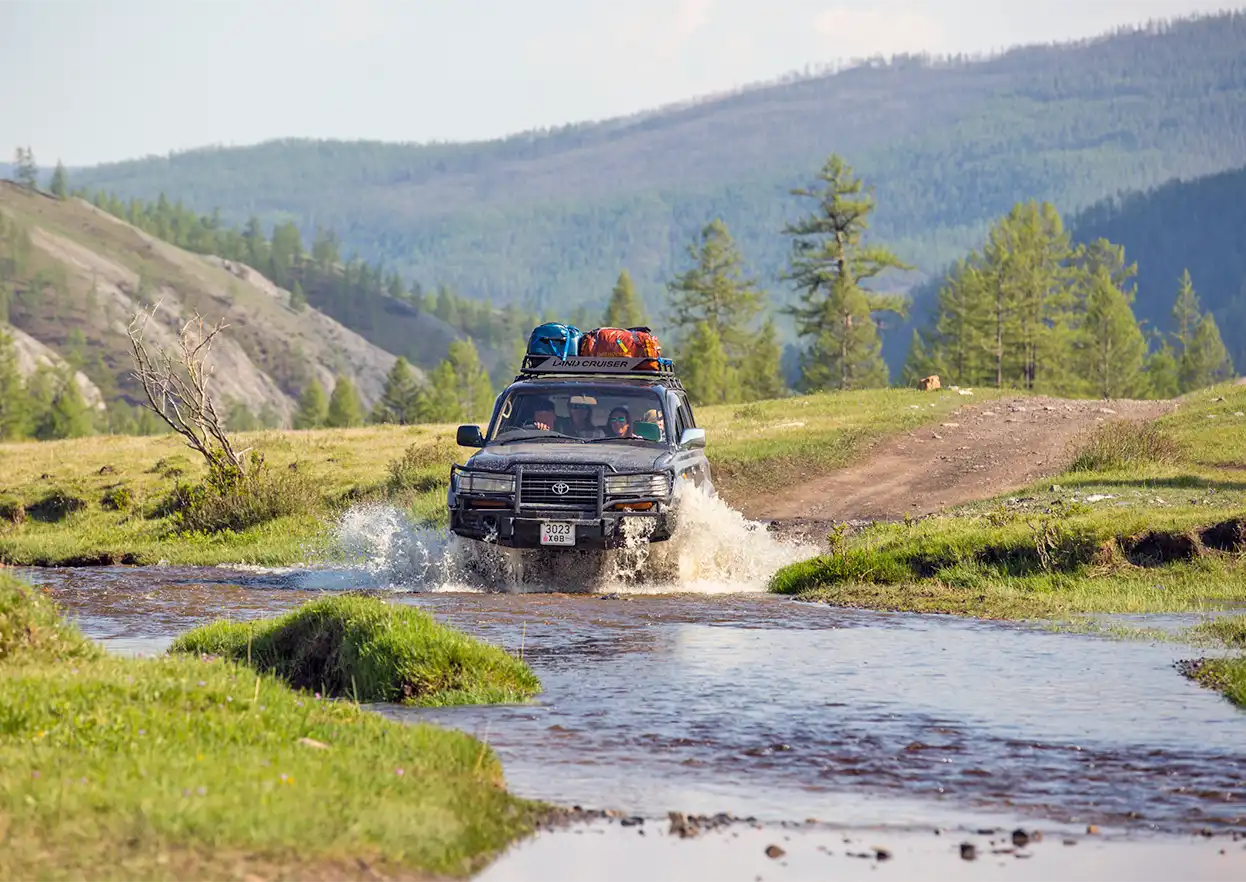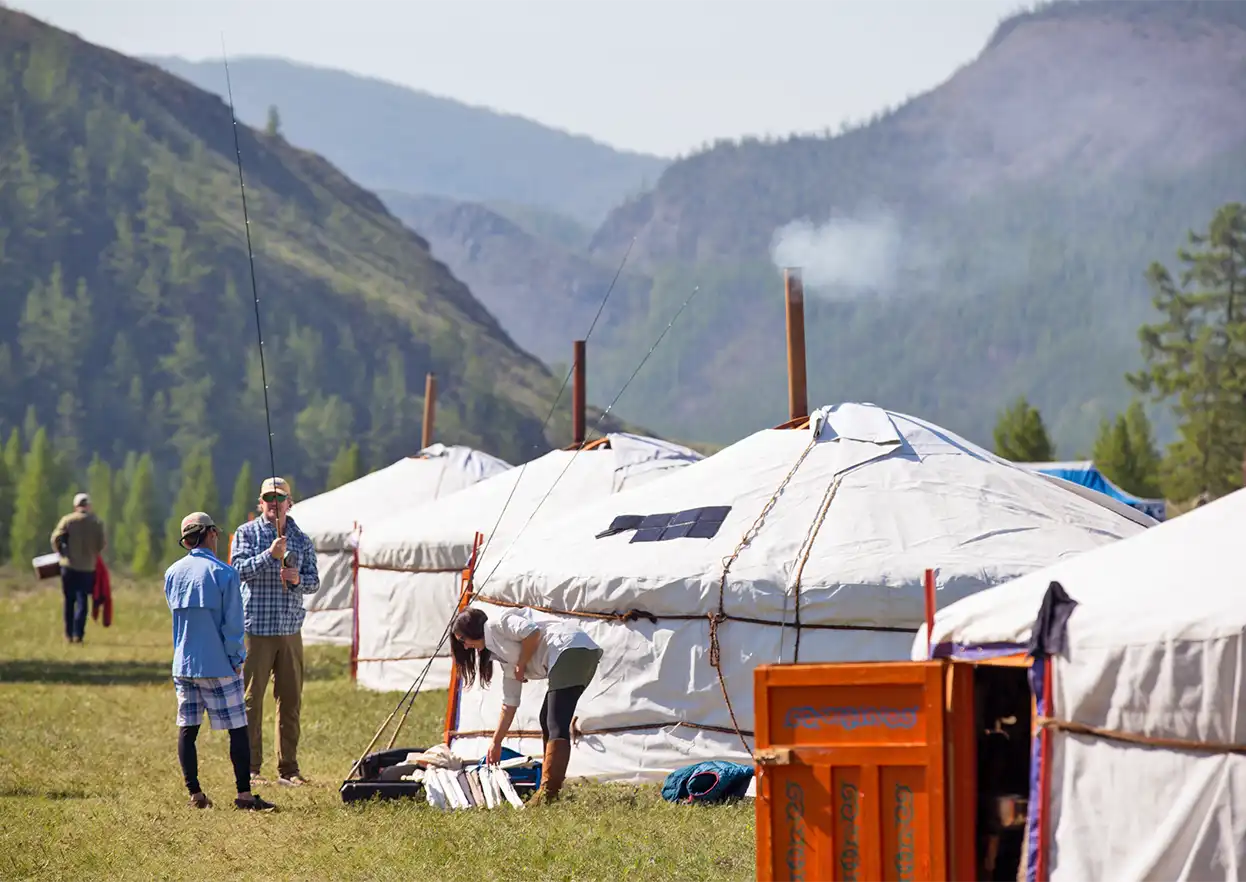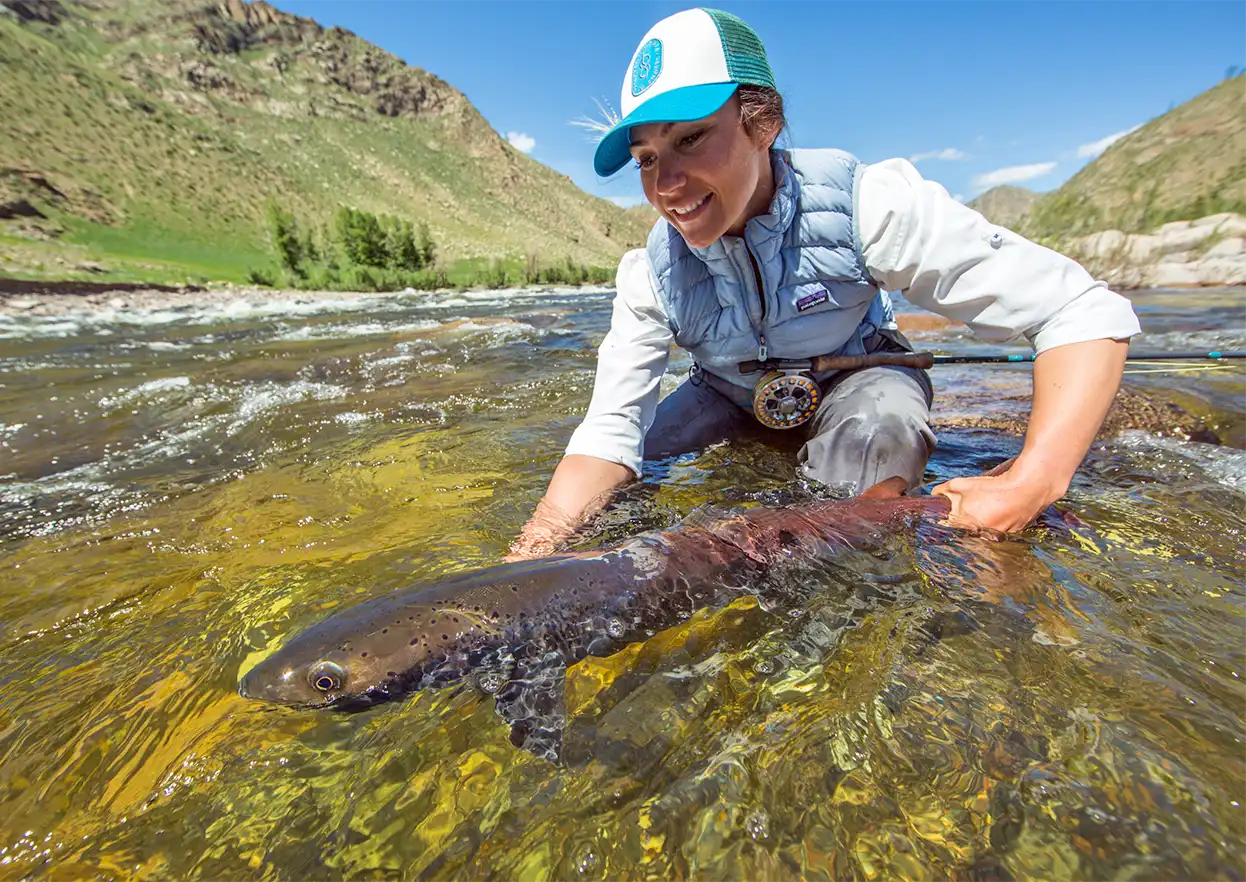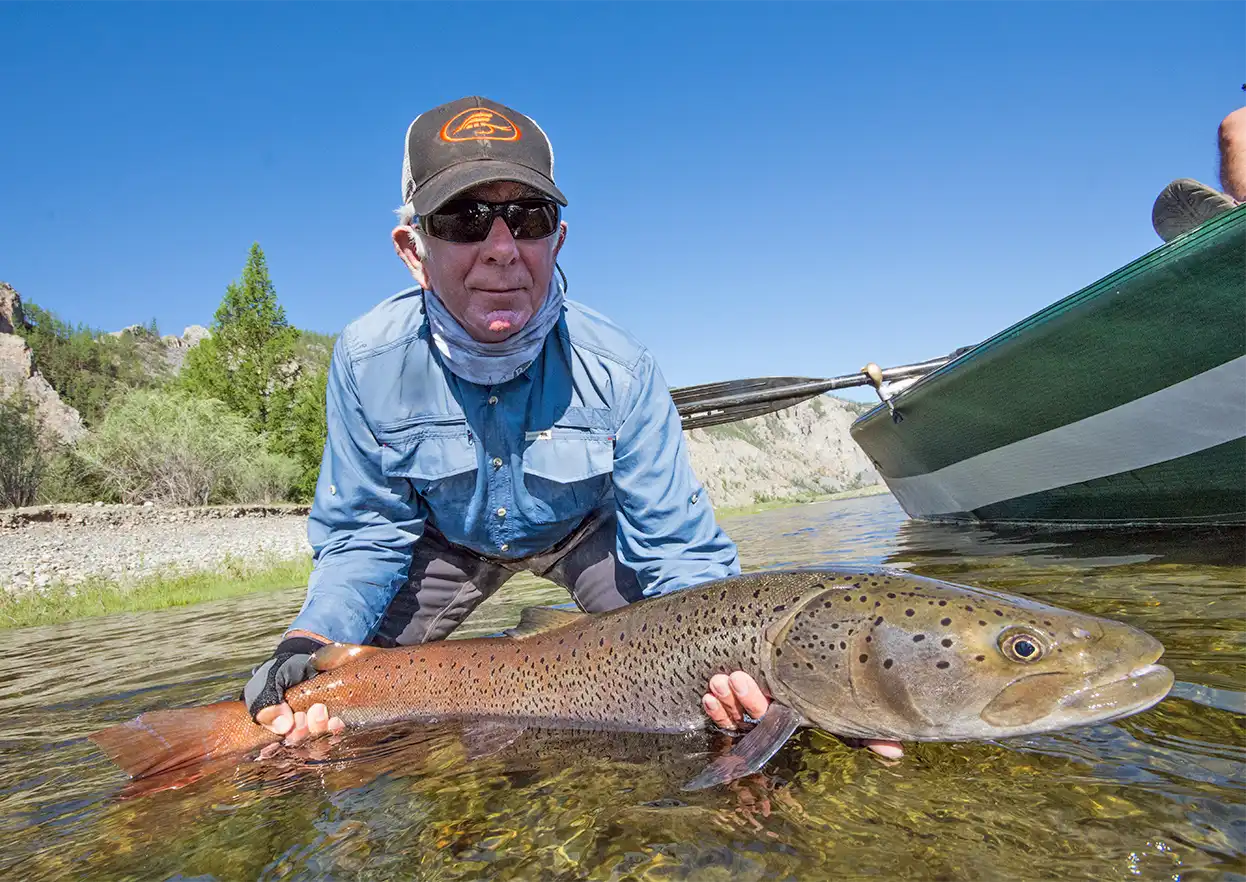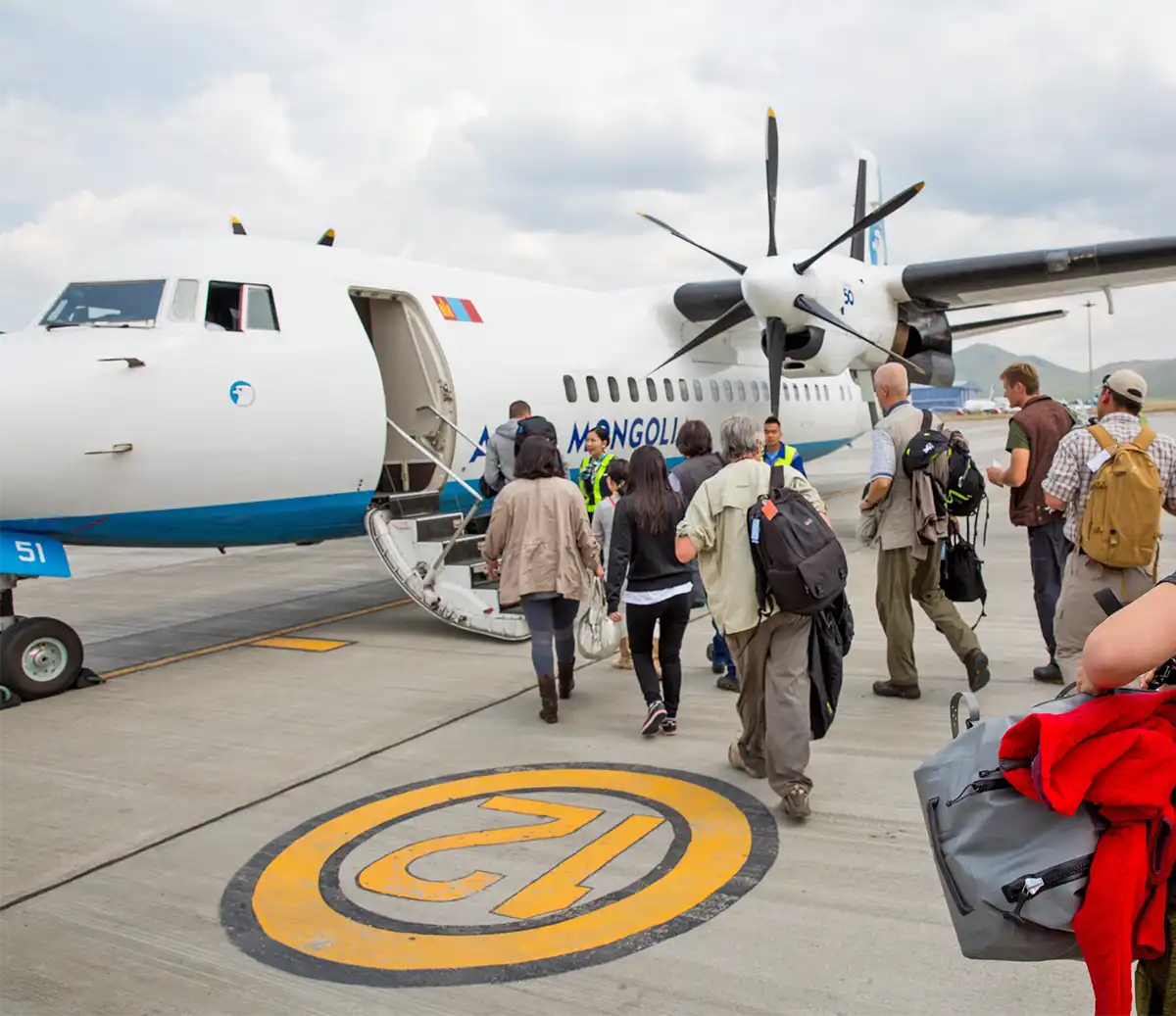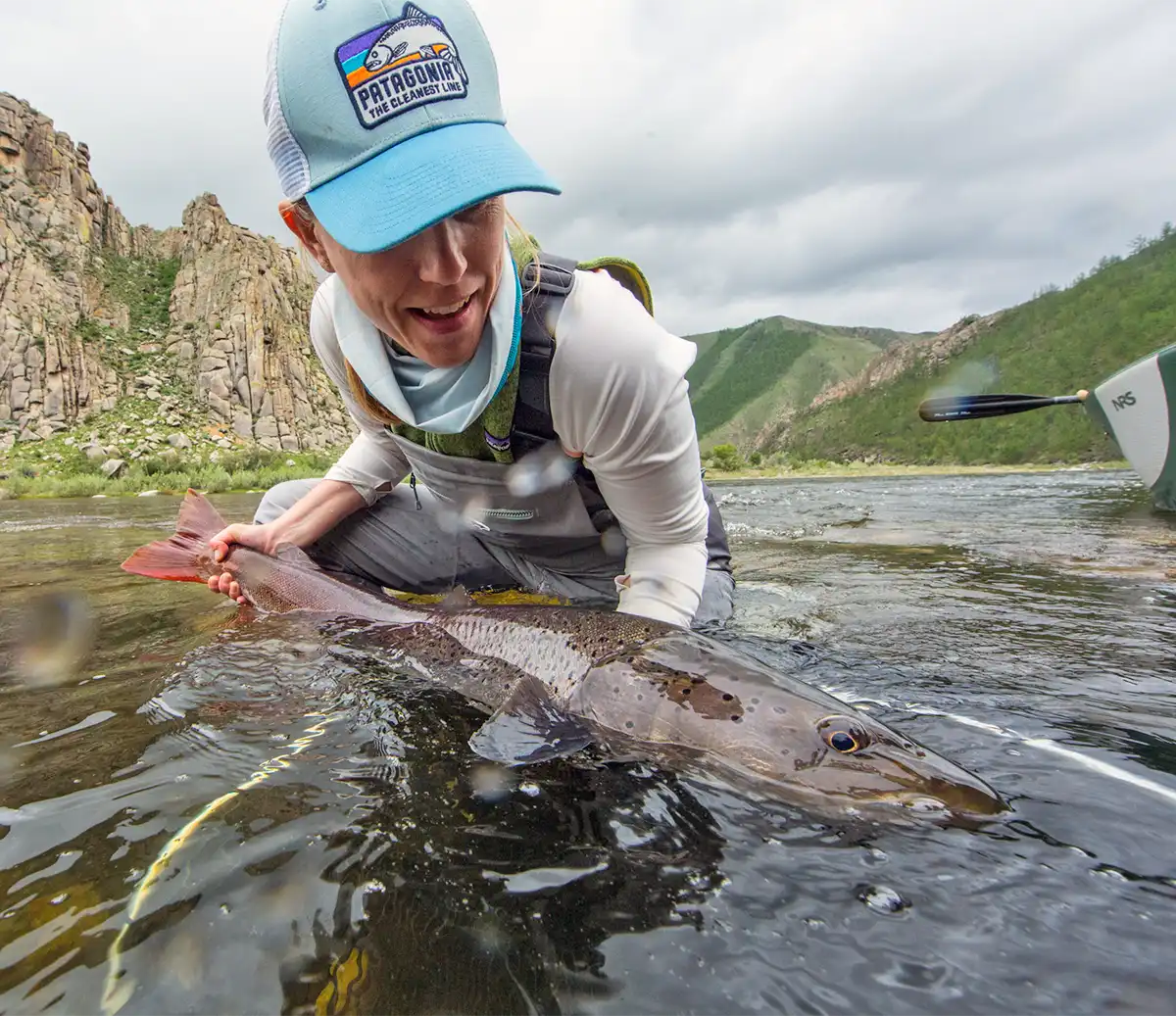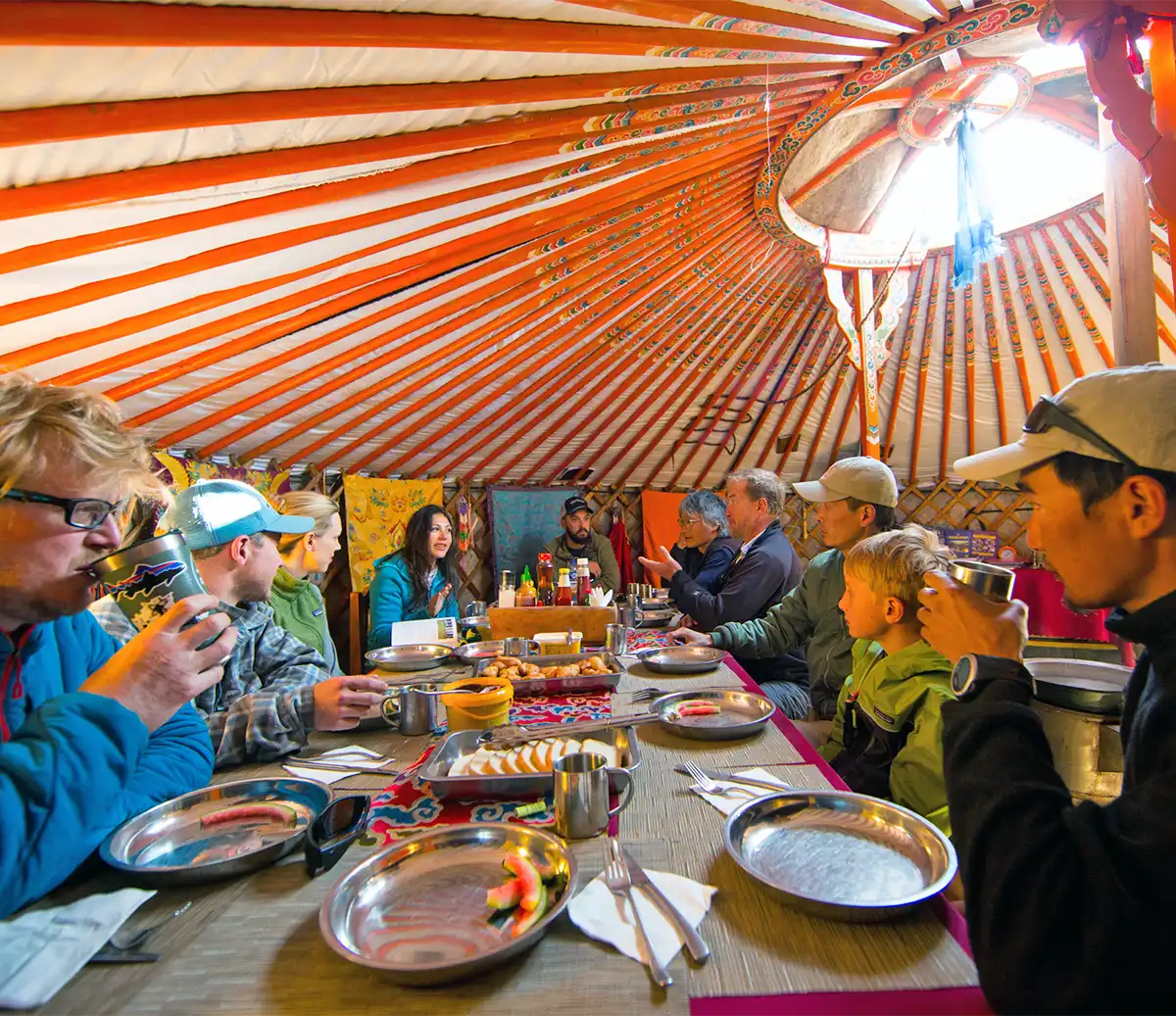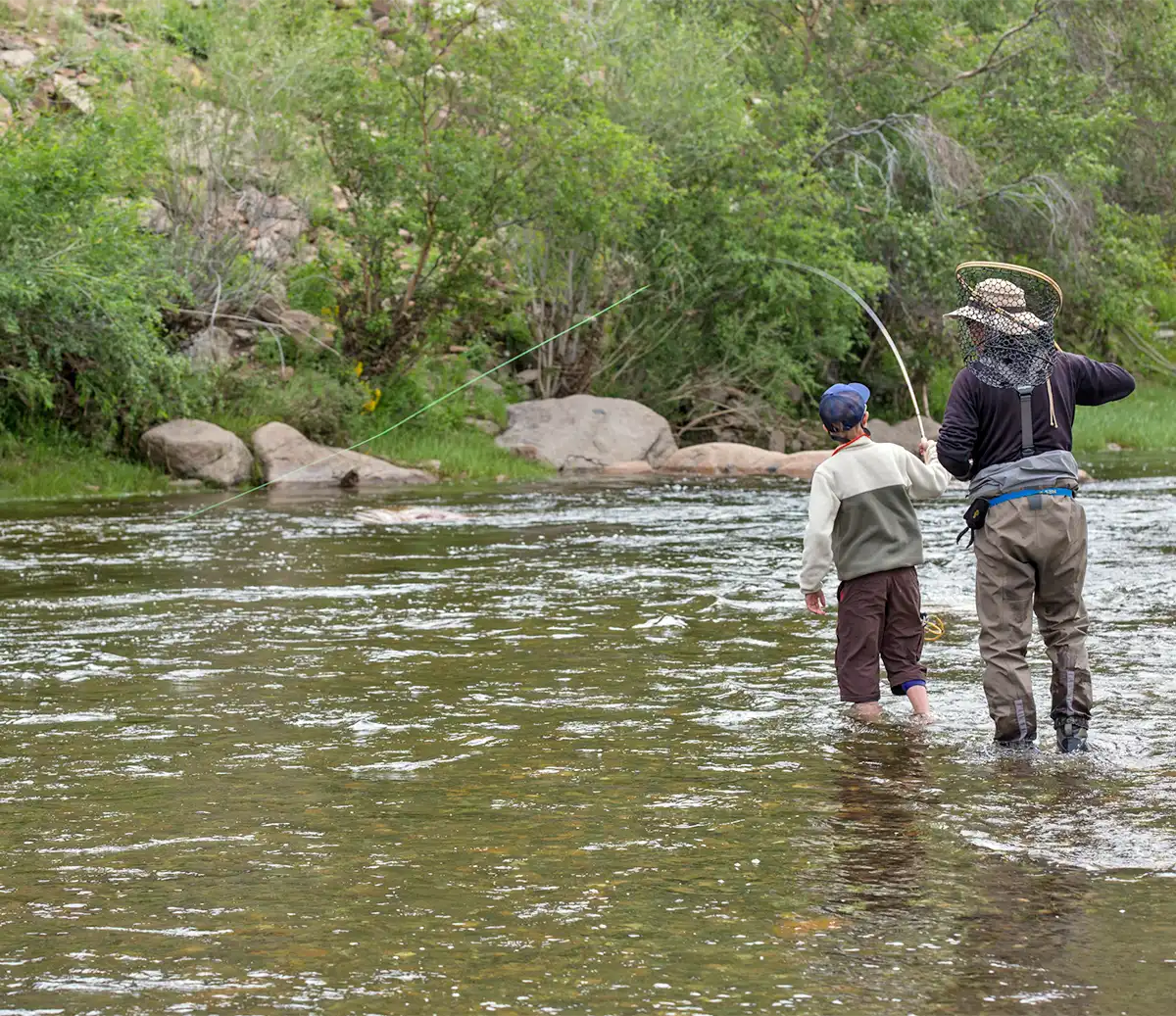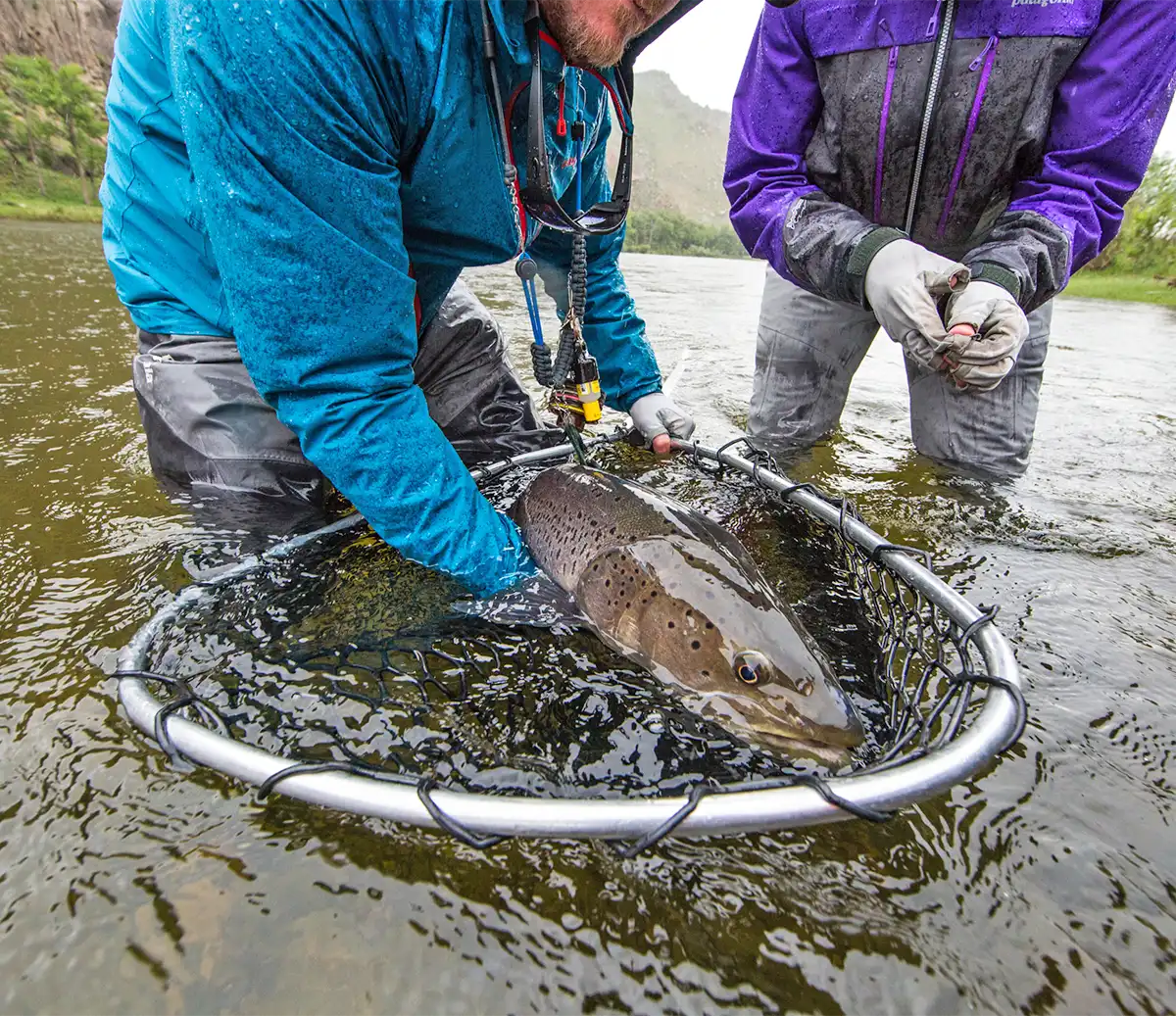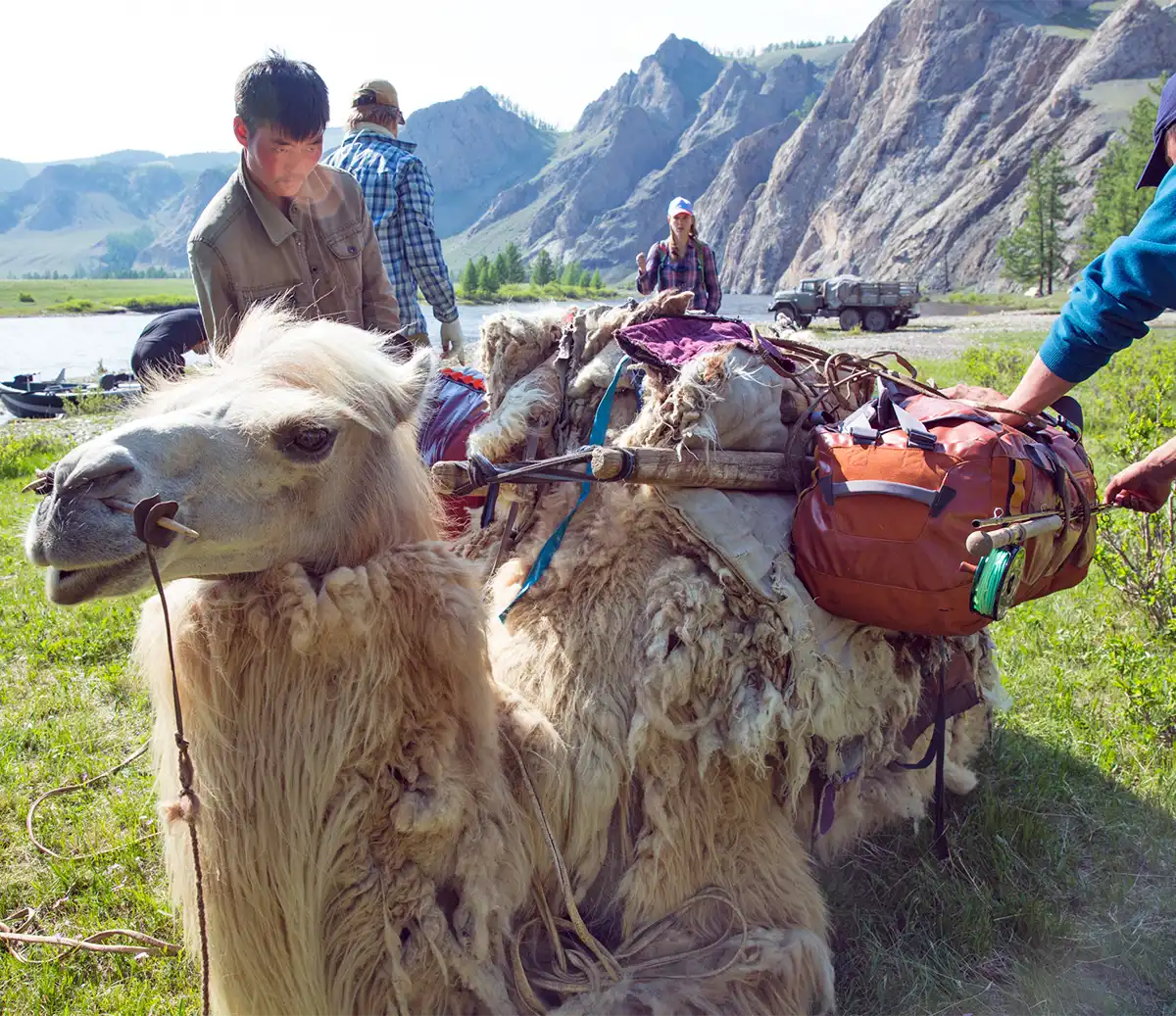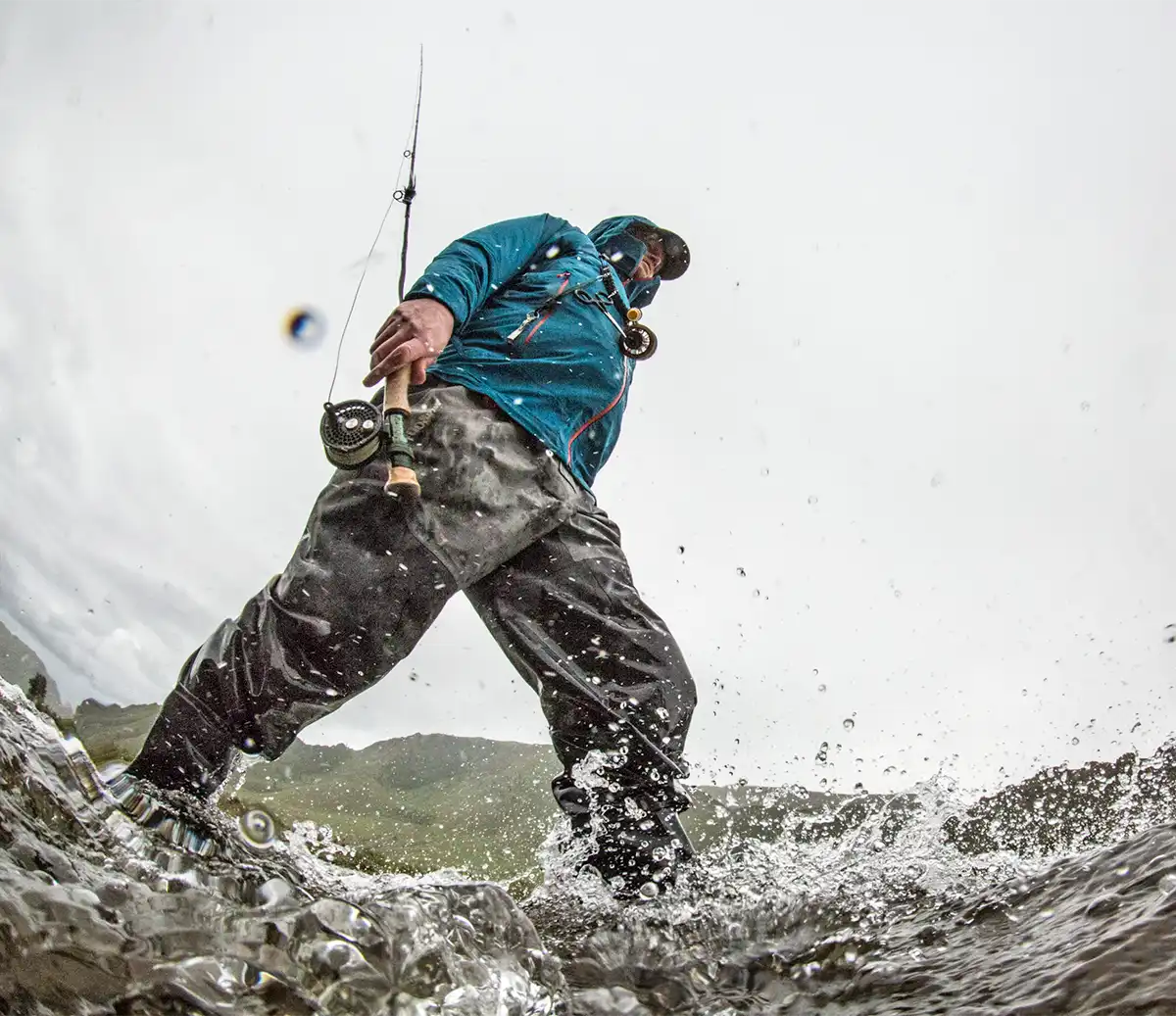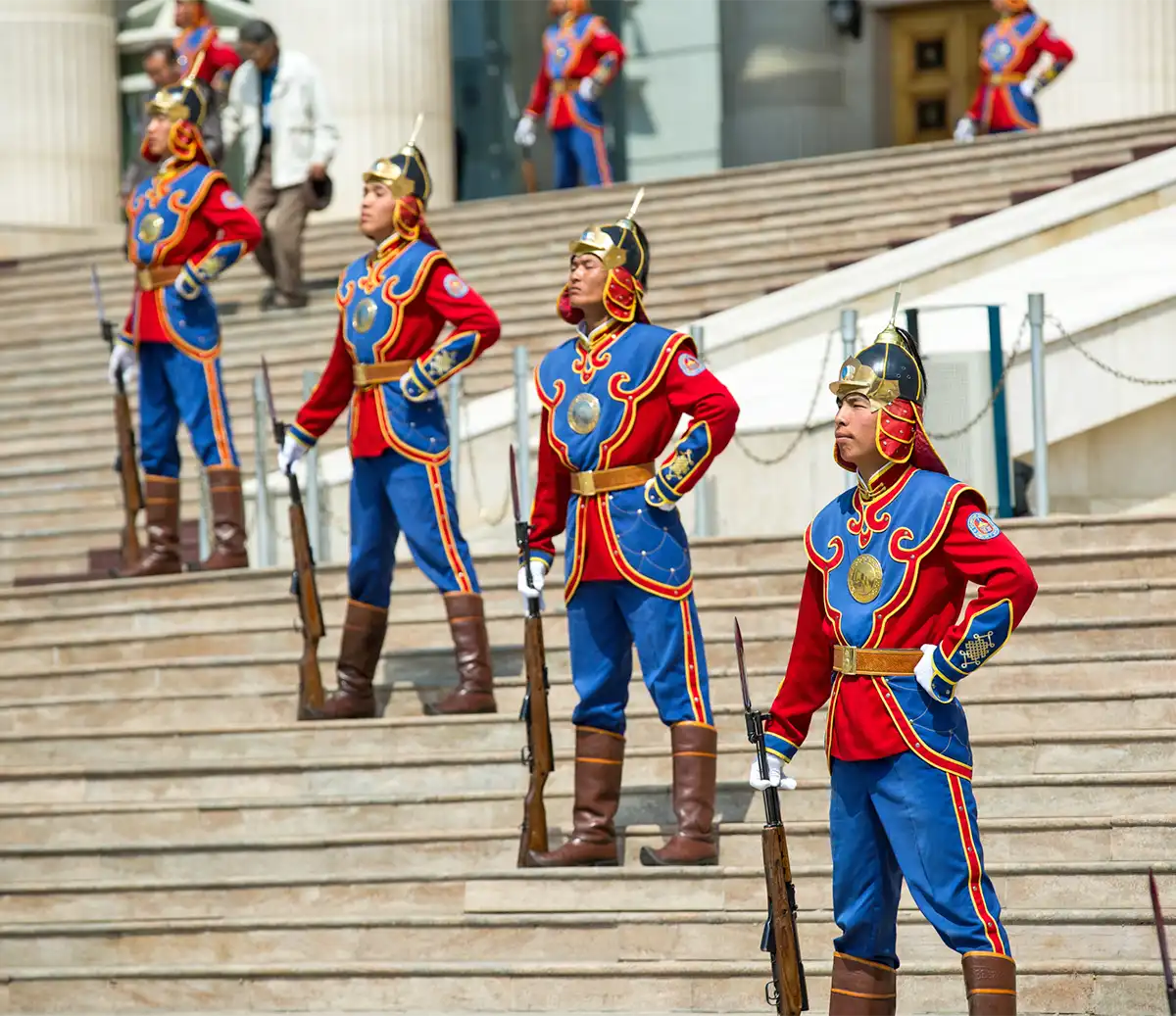This trip is a massive adventure, combining everything from small regional aircraft to off-road vehicles to horses and camels. Participants must be in very good physical condition to participate in this expedition!
This is a trip for guests who prefer to wade/walk. On this trip, the boats are primarily for transport. These streams are amazingly well suited for fly-fishing. The river has loads of structure. There are several small pool/drop rapids and plenty of bumpy sections with large boulders and loads of interesting features, including plenty of riffles and pools. We fish only the prime season when the water is generally very clear. However, gin clear water is not guaranteed. Wild taimen only survive in true wilderness. There are no dams and river flow may fluctuate substantially with the weather.
When the water is clear, we frequently spot cast for big fish, much like chasing tarpon on the flats. This requires very stealthy and technical fishing. Over the period of the week, we generally hook progressively more and larger fish as everyone learns the secrets of taimen.
Besides the incredible fishing (of course) the healthy riparian habitat is good for wildlife. Birds are generally the highlight, including numerous raptors spotted along the forested river bottom. The watershed hosts many mammals, but these creatures are generally shy. There are roe deer along the banks and moose, elk and bear on the upper stretches. In the early autumn, you should hear elk bugling on the upper river. It’s very common to hear wolves in the evenings. We very occasionally see mink, sable and beaver. There are fantastically large Siberian marmots cheerily whistling along the banks.
One of the best parts of the expedition is the opportunity to interact with traditional nomads. We will be passing gers along the river and spending time with the local herders who pack our gear into the high-country. It’s a wonderful chance to glimpse one of the world’s most unique mountain cultures. Watching the nomads dressed in their traditional costumes while they gallop across the wide open spaces to their brilliant white gers sometimes feels like we’re stepping back in time. At your request, we will make an impromptu visit to private Mongolian homes.
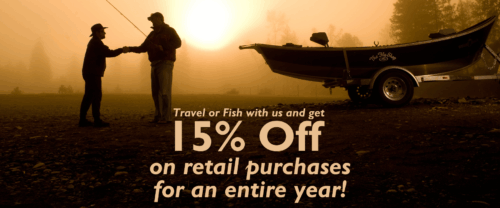
Headed out on your next adventure with us? The Fly ShopⓇ has you covered. As a thank you to our travel guests, enjoy 15% off all retail purchases for a year! — the perfect chance to gear up before your trip.
Whether it’s flies, leaders, apparel or a new rod and reel outfit, we’ve got everything you need to make your journey more comfortable, more successful, and more fun. (some exclusions apply)


